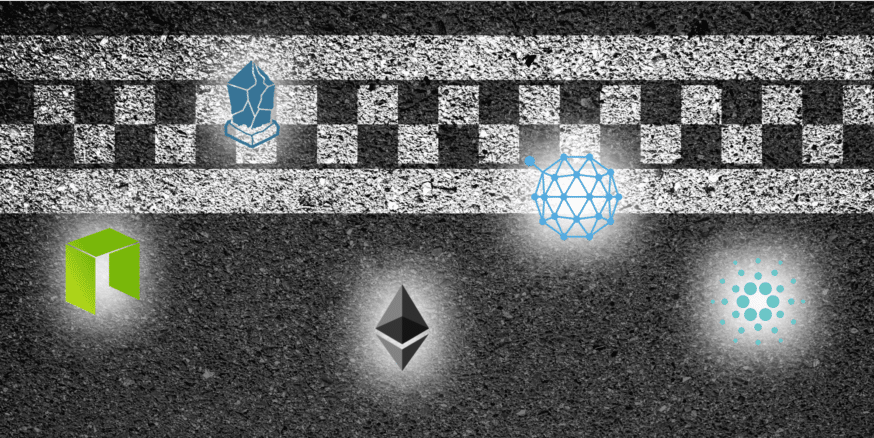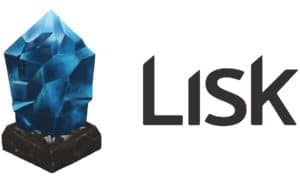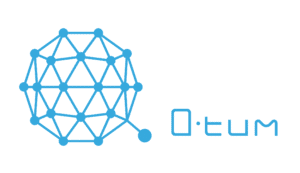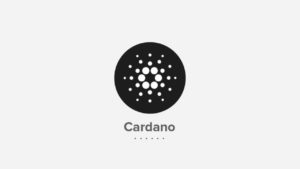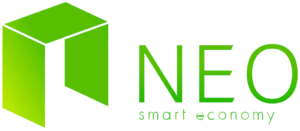- Off to the Races: The 5 Projects Competing to be the Best Dapps Platform
- Ethereum: King of the Dapps
- Lisk: Building a Simple, Complete Dapp Package
- QTUM: Merging EVM with Bitcoin’s Base Code
- Cardano: The New Nerd on the Block
- NEO: China’s Answer to Ethereum
- Analysis & Conclusion
Off to the Races: The 5 Projects Competing to be the Best Dapps Platform
Decentralized apps (dapps) are the future of blockchain development. Ever since Ethereum introduced smart contracts for creating programs on-chain, developers have been testing the potential applications of blockchain outside of finance. Dapps represent the new frontier for software that’s decentralized. They can take advantage of blockchain’s security, community governance, and accessibility.
Ethereum is the first, biggest, and most well-known dapps platform. However, in recent years, competitors have entered the space, hoping to topple Ethereum from its throne. Here, we’ll take a look at the competitors in the dapps space. The goal is to give a fair overview of the various dapps platforms. In the end, we’ll share predictions for how the dapps race may shake out. But we’re early in the development of these platforms, and a lot could still change.
Ethereum: King of the Dapps
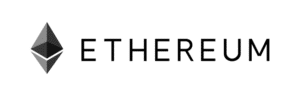
This was a breakthrough for blockchain. Bitcoin’s blockchain wasn’t compatible with developers building on top of it. For security reasons, Bitcoin’s code is not Turing-complete, meaning it doesn’t support certain core functionality required in programming, like loops and conditional statements. The EVM solved that problem by creating a layer above the blockchain. Along with the EVM came a compiler for a lesser-known programming language called Solidity.
Why Solidity?
While there are some other options, Solidity is the programming language you’ll need to know if you want to write a smart contract on Ethereum. Without getting too deep into the technical details, Solidity is a language that suits writing smart contracts. It’s strongly typed, meaning data is codified into clearly defined types. It also undergoes static type checking to test for errors prior to running.
As we’ll see later, other dapps platforms have decided to avoid Solidity. They believe forcing developers to learn a new language is an unnecessary hurdle. Instead, they implement compilers that allow developers to work in popular languages like JavaScript, C#, and Java. Vitalik Buterin, Ethereum’s CEO, is openly disdainful of platforms using other coding languages. Ethereum chose Solidity for a reason, and other languages aren’t well suited to writing contracts, according to Buterin.
Creating a UI
Solidity allows you to write a smart contract. However, smart contracts are only one part of a dapp. They’re the back-end, behind the scenes wiring for dapps. You also need a front-end user interface. Other competitors are integrating complete solutions for dapps, both front-end and back-end. On Ethereum, however, you’ll need to use a third-party service to create your user interface.
At least, for now. Ethereum is under constant development, and support for dapp UIs could come in the future.
Ethereum’s Weakness
Ethereum’s status as first, biggest, and most well known puts it in a league of its own compared to other dapps platforms. If it continues its current trajectory of development and partnership, it will be difficult for any competitor to keep up.
That said, Ethereum admittedly has scalability problems. It currently only supports 15 transactions per second. It also uses considerable energy and computing power with its current proof-of-work consensus system. These key issues will be addressed in upcoming Ethereum updates. Ethereum has announced it will implement Plasma to address scalability, making transactions smaller and faster. For over a year now, Ethereum has also hinted at changing their consensus mechanism to proof-of-stake.
The larger lesson here is Ethereum’s strong team and developer community will likely overcome the obstacles currently in its path. Its dominance to date has made it one of the best developed, most respected projects in the blockchain world.
Where Ethereum is Heading
Ethereum is highly focused on building up its user adoption. On its public blockchain, Ethereum is making it easier for developers to use the EVM. They’re establishing industry standards for creating certain types of smart contracts, like the ERC-20 protocol for example.
However, Ethereum is also working hard on building its private partnerships. The Enterprise Ethereum Alliance has many major companies involved. These include Microsoft, UBS, Samsung, Mastercard, Intel, Accenture, BP, J.P. Morgan, and Deloitte, just to name a few. Ethereum is becoming the go-to resource for open source standards for blockchain development.
Vitalik expects an entire spectrum of blockchain adoption – public transparent blockchains, private secure blockchains, and mixed solutions.
“I expect in the long term we’ll see every possible combination of public and private emerge, including pure consortium chains, consortium chains connected to public chains via relays, consortium chains with fraud proofs enforced on public chains (ie. plasma and similar systems), purely public chains, and so forth. The challenge right now is to get the scalability of public chains higher, and come up with better answers for privacy challenges.”
Long-term, Ethereum will cater to all these types of blockchain needs. Ethereum has by far the largest collection of public dapps of any platform. They’re most likely the most popular provider of private decentralized solutions as well. This institutional and corporate support is where Ethereum’s true power lies.
[thrive_leads id=’5219′]
Lisk: Building a Simple, Complete Dapp Package
Lisk is coming up on a year old, so it’s still a fairly new platform for decentralized apps. In fact, much of Lisk’s product and claims are unreleased or untested as of yet, making it difficult to give a detailed evaluation of the platform.
That said, developer accessibility is Lisk’s unique angle. They want to make it as easy as possible to create a decentralized app. They do this with a pure Javascript environment, from front-end user interface to back-end interaction with the blockchain. In contrast to Ethereum, however, the dapps themselves don’t live on the main blockchain. Instead, each dapp has its own side chain, maintained by the dapp’s users. This framework offers flexibility and insulates the Lisk mainchain from code issues in user-created dapps.
Is Lisk a Developer’s Dream?
Lisk wants to make it easy for developers to begin working on the blockchain. The ultimate goal being attracting new developers to work on decentralized software solutions. Lisk’s Software Development Kit (SDK) has not yet launched. The alpha version of the SDK is set to launch on February 20.
Preliminary analysis from software experts casts some doubt on Lisk’s ease of use claims. First, Lisk’s framework provides few protections for developers. With Ethereum, the EVM will refuse to compile bad code, protecting the blockchain from user-generated errors. On Lisk, this isn’t the case. Infinite loops, unbounded memory growth, no memory tracking support, an unsecure sandbox, and non-deterministic behavior are all problems for Lisk.
Lisk argues that because all dapps operate on a side chain, bad code would require a hard fork of the side chain but would not affect Lisk’s main chain. This may be the case, but it’s still an annoyance for developers to say the least. Many have opined that learning Solidity is trivial for new developers compared to learning all the pitfalls that could come from using Lisk’s javascript platform.
What is Lisk Good For?
That said, Lisk is still good for specific applications. However, it seems like Lisk is limited in its scope. It certainly doesn’t have the technical foundation to compete with a Goliath like Ethereum. In the end, it will mostly be a smaller project for niche uses, developers dipping their toes in the smart contracts water, and dapps that are too big to use a mainnet all the time.
QTUM: Merging EVM with Bitcoin’s Base Code
QTUM (pronounced quantum) is a Singapore-based dapps platform built on a combination of code from Bitcoin and Ethereum. In addition to using much of Bitcoin’s security, QTUM implements proof-of-stake consensus and the Ethereum Virtual Machine.
QTUM’s support for the EVM means dapps from Ethereum could easily be ported over to QTUM. New dapps on QTUM also use Solidity for development. This makes for low switching costs from Ethereum to QTUM, because QTUM runs the same open source EVM code. In the future, QTUM hopes to support other virtual machines, not just the EVM.
Built for Business: Security and Scalability
The QTUM team spends a lot of time touting their stable platform built on Bitcoin’s foundation. Using battle-tested code means they’re less vulnerable to attack than code developed from scratch. In addition, the proof-of-stake consensus protocol means they use less energy to process transactions than proof-of-work systems.
The stability of QTUM’s architecture is part of their “built for business” marketing strategy aimed at institutional uses of smart contracts and dapps. Additionally, they add an abstract accounting layer to the ecosystem. This reduces the computational load on the mainnet, improving scalability.
QTUM’s Other Cool Features
QTUM will also offer support for converting human-readable agreements into blockchain-ready smart contracts. Whether this will be QTUM developers, private contractors, or some other system is still unclear.
It’s architecture also supports lite wallets, including mobile wallets for storing and transacting in QTUM. This makes QTUM one of the first projects to enter the realm of mobile smart contracts.
QTUM has a lot of cool features and new technologies they’re bringing to the table. In the end, however, features alone won’t win the dapps race. The smart developers at Ethereum or any other of QTUM’s competitors will watch QTUM to find which of its features are attracting the most attention. Then, they’ll implement those features as part of their own platform.
QTUM’s Future Success
The success of QTUM relies on its adoption by major companies. Since fancy features will come and go with ongoing development, QTUM will need to secure major partnerships in their home region of Southeast Asia. This will be difficult in China, where NEO has a commanding lead and governmental support for their dapps platform. However, growing notoriety for QTUM could lead to important early partnerships that will make or break the company.
Cardano: The New Nerd on the Block
Cardano is so new that it’s difficult to say much about this platform yet. It’s a project from Charles Hoskinson, one of Ethereum’s co-founders. The idea for Cardano came in 2015.
They imagined a dapps platform built on scientific, peer-reviewed research. This approach is appealing in terms of forward-thinking, scalability, and security. However, it means the project will move slowly. The first version of the Cardano network won’t be ready until 2019.
Cardano’s Basic Architecture
While we don’t know all the details yet, it’s clear Cardano will be a dual-layered solution. One layer will be an account layer, much like the ledgers of other cryptocurrencies with basic transaction information only. The second will be a control layer that manages all the metadata associated with smart contracts; why, how, and when funds are released; and identity of participants and items in the transaction.
The separation of transaction data and metadata decreases needed storage and increases scalability. Cardano will also implement proof-of-stake to reduce energy consumption.
Cardano is programmed in Haskell, a language for business applications and data analysis. As such, Cardano’s future applications are likely to be financial or organizational.
Cardano’s Long Play
Cardano is still years away from widespread adoption. However, its insistence on peer-reviewed development indicates that Cardano will be playing the long game. Cardano’s path to dominance would likely require Ethereum make a major misstep several years from now. If so, Cardano could sweep up market share as a more trusted, reliably developed option.
NEO: China’s Answer to Ethereum
NEO (originally known as AntShares) is the first open source blockchain project to come out of China. It’s genesis block launched in December 2016, but founders Da Hongfei and Erik Zhang were working on the idea for years before launching the network.
NEO’s dapp platform includes support for developing in C# and Java. In the future, it will support Python and Go as well. NEO also uses dBFT consensus, a variant of proof-of-stake that offers even faster performance. NEO is built for business, with its network currently capable of 1,000 transactions/second and theoretically capable of 10,000/second. It’s a large scale contender for enterprise use.
The focus for NEO is on digitizing the Chinese economy. They hope to provide identity services, product tracking, and payment options through their dapp community.
NEO’s Foothold in China
NEO has existing adoption with several built-out dapps on the platform. They’ve also worked with key companies like Microsoft and Alibaba on blockchain solutions. NEO’s sister company, Onchain, builds private blockchain solutions for major companies throughout China, giving NEO a clear advantage with Chinese enterprise dapps.
NEO co-founder and CEO, Da Hongfei, is known for his influence with the Chinese government. He helped guide the government through the early days of cryptocurrency and took key meetings during the Chinese ICO ban in 2017. As a result, NEO has received status as essentially a government-endorsed platform.
Government support in China is key. It makes operating with Chinese companies much easier. Official recognition also means NEO is the authority on blockchain in China. In the coming years, if it can reintroduce government-compliant ICOs to China, it could be a turning point for NEO.
Analysis & Conclusion
Ethereum is still the clear leader in dapp services. It has the strongest adoption of users building on its platform. The Ethereum Enterprise Alliance includes some of the strongest companies in the world. It also has Vitalik Buterin and one of the sharpest development teams in the business. Ethereum could easily implement its competitors’ best ideas after waiting for its competitors to test what works best. Ethereum is playing on a different plane from the other dapps platforms.
Nevertheless, competition is great. These new platforms have a lot to offer, and they’ll be testing Ethereum’s dominance with new technology and features. In the end, however, it will come down to user adoption, and catching up with Ethereum there will be a monumental task.
NEO has the best shot at challenging Ethereum on user adoption. It’s a long shot, to be sure, but NEO’s dominance in the Chinese economy and government means it could soon pick up major partners in China. Chinese enterprise partners alone wouldn’t topple Ethereum, but it would certainly make the conversation more interesting.
Expect Ethereum’s dominance to continue, absent a major mishap. But as users, we’ll soon be enjoying the fruits of technological competition. Competition will force Ethereum to innovate at a high rate to fight off its competitors, and that will be good for the whole ecosystem.
Never Miss Another Opportunity! Get hand selected news & info from our Crypto Experts so you can make educated, informed decisions that directly affect your crypto profits. Subscribe to CoinCentral free newsletter now.






